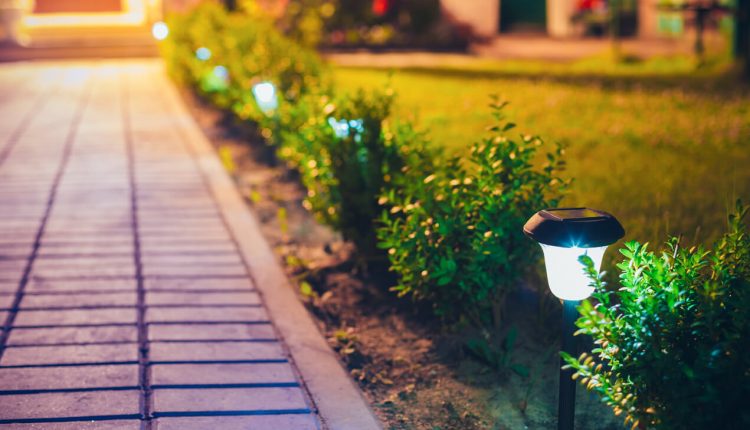Have you wondered how to create magic in your garden after dark? The answer to this question are solar lamps . Not only is it affordable and ecological, but it also adds a unique charm to your garden. Solar lighting is universal and suits any garden style - from modern to rustic. In this article, you will learn how solar lamps work, their advantages and disadvantages, and discover different types of solar lighting for the garden. Get ready for relaxing evening moments surrounded by magical light!
How do solar garden lamps work?
 Solar lamps use the solar energy they obtain during the day. They have photovoltaics that convert sunlight into electricity. This energy is then stored in small batteries. After dark, electricity is consumed by LEDs or halogen lamps, which illuminate the area around the house.
Solar lamps use the solar energy they obtain during the day. They have photovoltaics that convert sunlight into electricity. This energy is then stored in small batteries. After dark, electricity is consumed by LEDs or halogen lamps, which illuminate the area around the house.
The power of solar lamps is not very high, usually a few Watts. However, after charging, they can glow for up to several hours. Solar lamps turn on automatically after dark thanks to the built-in twilight sensor. Some models also have a motion sensor that allows you to emit light of different colors.
Advantages of solar lighting
Solar lighting for the garden has many advantages. First of all, it is an ecological solution because it uses free solar energy. It does not generate additional costs related to electricity consumption and does not emit harmful substances into the atmosphere. Moreover, solar lighting is easy to install and does not require connection to the network or complicated installation work. Just place the lamps in the right place and point the solar panels towards the sun.
Solar lamps are also maintenance-free. Solar panels charge the batteries during the day, and the lamps turn on automatically at dusk and turn off in daylight. Their mobility is another advantage - they can be easily moved to different places in the garden, terrace or balcony, depending on your needs.
Disadvantages of solar lighting
While solar lighting has many advantages, it also has some disadvantages. The power of solar lamps is not equal to that of electric lighting, so they cannot be the only source of light. If you like to spend evenings in the garden reading a book, you will need to use other light sources. Moreover, solar lamps are dependent on weather conditions. On cloudy days, they may not collect enough solar energy, resulting in shorter lighting times. Solar lamps also do not tolerate frost and snow well, which may lead to damage to the housing and faster battery wear.
Types of solar lighting for the garden
There are many different types of solar garden lighting. Here are some of the most popular:
-
Free standing solar lamps - these are popular models driven into the ground. They come in various designs and styles, such as lanterns, spheres, poles and decorative shapes. They are used to illuminate paths, flower beds, terraces and other areas of the garden.
-
Hanging solar lamps - designed to be mounted on a wall or tree. They are perfect for lighting terraces, balconies, gazebos and walls of buildings in the garden.
-
Low decorative portable lamps - these are decorative light points that can be placed on a table, railing, rock garden or other flat surface. They create a romantic atmosphere during evening meetings outdoors.
-
Floating solar lights - they are water resistant and can be safely used on the water surface in a swimming pool, pond, pond or fountain.
How to charge solar lights?
Charging solar lights involves exposing the solar panels to sunlight. To ensure efficient and fast charging, you should:
- Place the lights in an open space without covering the solar panels.
- Make sure that the lights are stable and do not fall over due to wind.
- Regularly clean the solar panels from dust, dirt and water.

